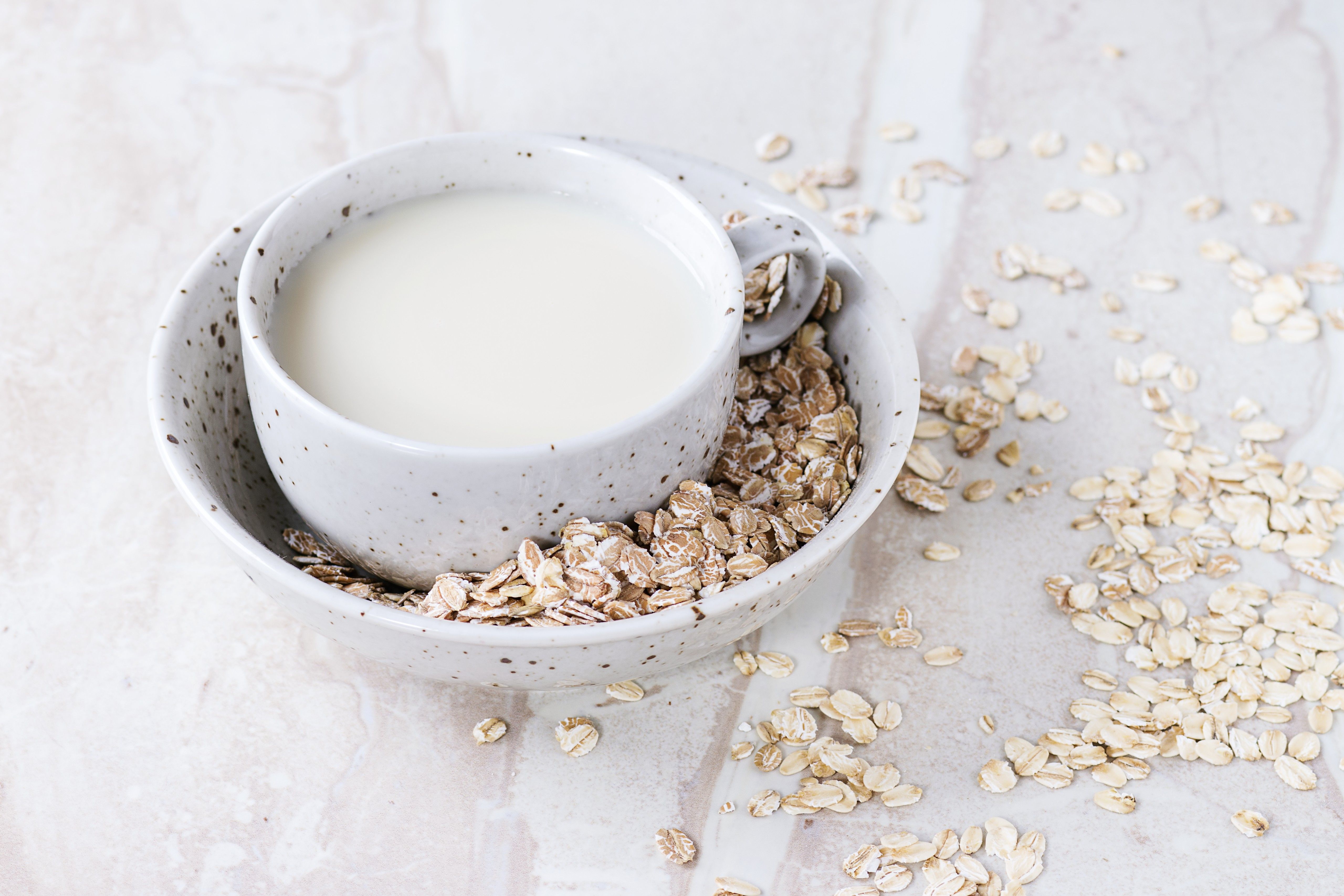
You Might Be Following A Plant-Based Diet Without Even Realizing It
02/19/2020Food trends come and go, but it seems that this whole plant-based diet thing is here to stay.
Even fast food joints are on-board; KFC just started rolling out vegan chicken nuggets and Denny’s now offers the Beyond Burger nationwide. And people are eating it up. In fact, the plant-based meat market was valued at about $12.1 billion in 2019—and is expected to more than double by 2025.
On Instagram, though, #plantbased eating looks a lot more like rainbow-colored grain bowls and avocado-based ice creams, not meatless meatball subs.
In reality, the average plant-based diet really falls somewhere between White Castle Impossible Sliders and that acai-chia-hemp-tofu-mango-kale smoothie bowl your favorite food blogger posted last week.
“A plant-based diet means eating primarily whole plant foods rich in vitamins, minerals, fiber, antioxidants, and healthy fats,” says Alexis Joseph, RD, the dietitian behind the popular blog Hummusapien.
Of course, sometimes you just need some chik’n nuggets. Plus, plant-based eating also gives you the flexibility to enjoy the occasional slice of real cheese pizza or bowl of chicken soup.
If you’re curious about what plant-based eating is all about, and whether it might be right for you, here’s what you need to know.
What is a plant-based diet, really? Is it the same as vegan?
Obviously, a plant-based diet means prioritizing plant foods—specifically minimally processed fruits, veggies, whole grains, beans, legumes, nuts, and seeds, says Joseph. What that looks like can vary from person to person, though.
And plant-based doesn’t necessarily mean plant-exclusive. Though veganism is a type of plant-based diet, you don’t have to cut out all animal products forever to consider yourself a plant-based eater. (Plus, not all vegan foods are inherently plant-based; egg-free brownies might be vegan, but they’re not truly plant-based if they’re packed with processed ingredients.)
“I consider myself plant-based because most of the foods I eat are plants,” says Joseph. “That said, I also eat yogurt, cheese, eggs, and fish when I feel like it, and that’s okay!”
Bottom line: Plant-based eating is more of a template that encourages focusing on plant foods, not a restrictive diet that makes things off-limits, says David Levitsky, PhD, professor of nutrition and psychology at Cornell University.
Quick recap: What do you eat on a plant-based diet?
Again, a plant-based diet is one that emphasizes vegetables, fruits, grains, nuts, seeds, and pulses (beans and legumes). In other words: Anything that doesn’t contain meat, fish, eggs, or dairy is fair game.
“When planned appropriately, you can meet all your nutritional needs through a plant-based diet,” says Ryan Maciel, RD, head nutrition coach at Precision Nutrition.
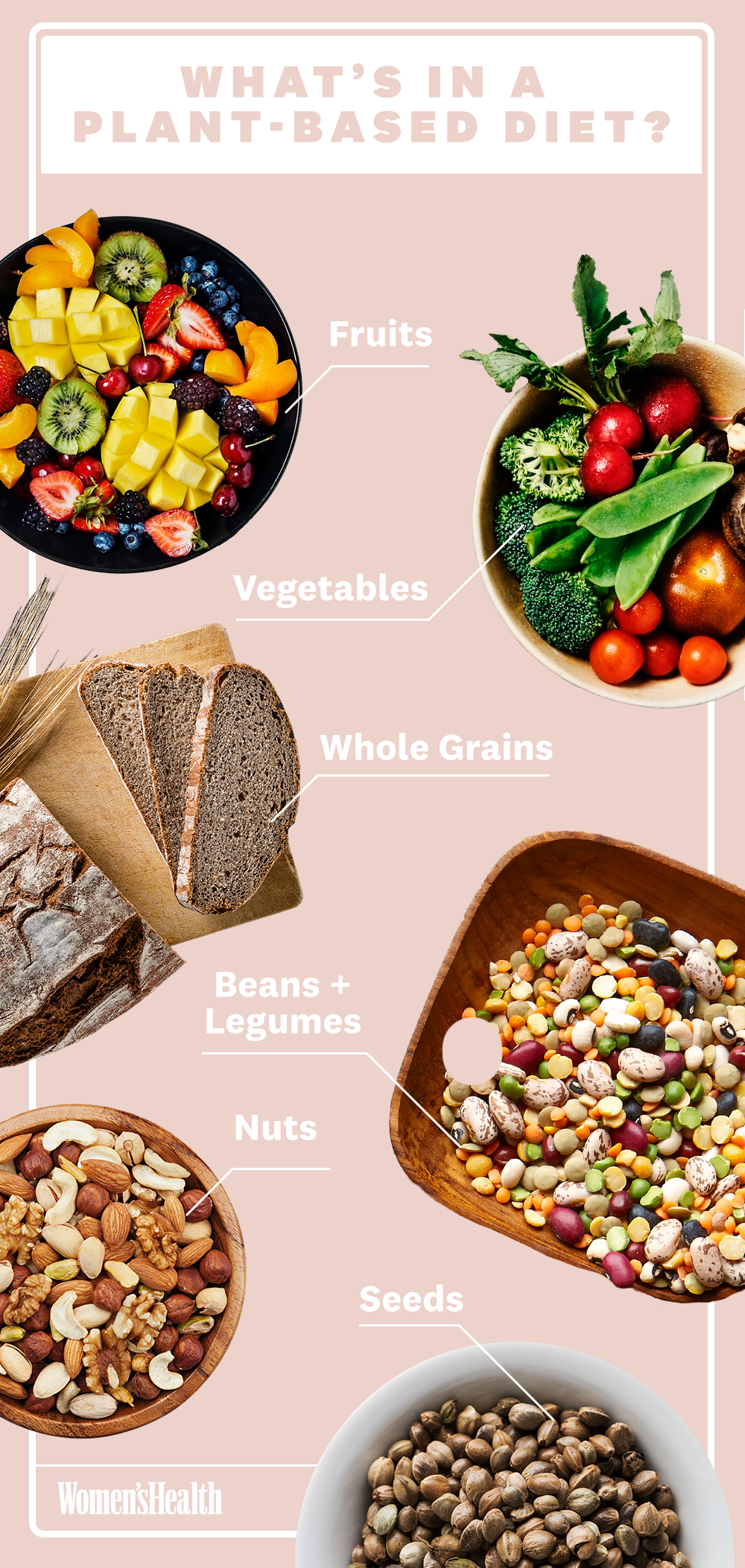
Instead of animal proteins, for example, you’ll focus on plant-based protein sources, like beans, peas, lentils, and soy products (tofu, tempeh, and edamame), says Maciel. Nuts, seeds, and nut butters also deliver a healthy dose of protein, along with healthy fats. Heck, even whole grains provide a few grams of protein per serving.
Once you’ve got your protein covered, try to eat as wide a variety of fruits and vegetables as possible, since eating different colored produce can help you get the different nutrients you need. For example, while dark leafy greens are a good source of iron and calcium, wild mushrooms provide vitamin D, Maciel says.
Are animal foods totally off-limits on a plant-based diet?
If your particular flavor of a plant-based diet is plant-exclusive, all meat, fish, dairy, and egg products are off the table. You’ll also need to steer clear of sneaky ingredients, like whey or casein (milk derivatives) and gelatin (made from animal bones), which are commonly used in processed foods, says Maciel.
If you’re taking a flexible approach, though, nothing is absolutely off-limits all the time. Whether you choose to eat animal foods once a day, once a week, or once a month, though, is totally up to you.
Either way, since plant-based eating emphasizes whole foods, you’ll want to minimize or avoid heavily-processed foods as much as possible, even if they’re vegan. Opt to get your protein from chickpeas and lentils instead of processed veggie burgers, and save the store-bought vegan ice creams and cookies for special occasions.
The benefits of a plant-based diet are very real.
Since a proper plant-based diet is centered around whole foods, it’s rich in vitamins, minerals, antioxidants, and fiber, says dietitian Amy Gorin, RDN.
“Plant foods are packed with fiber and phytonutrients that support immunity, combat inflammation, and feed the healthy bacteria in your gut,” echoes Joseph.
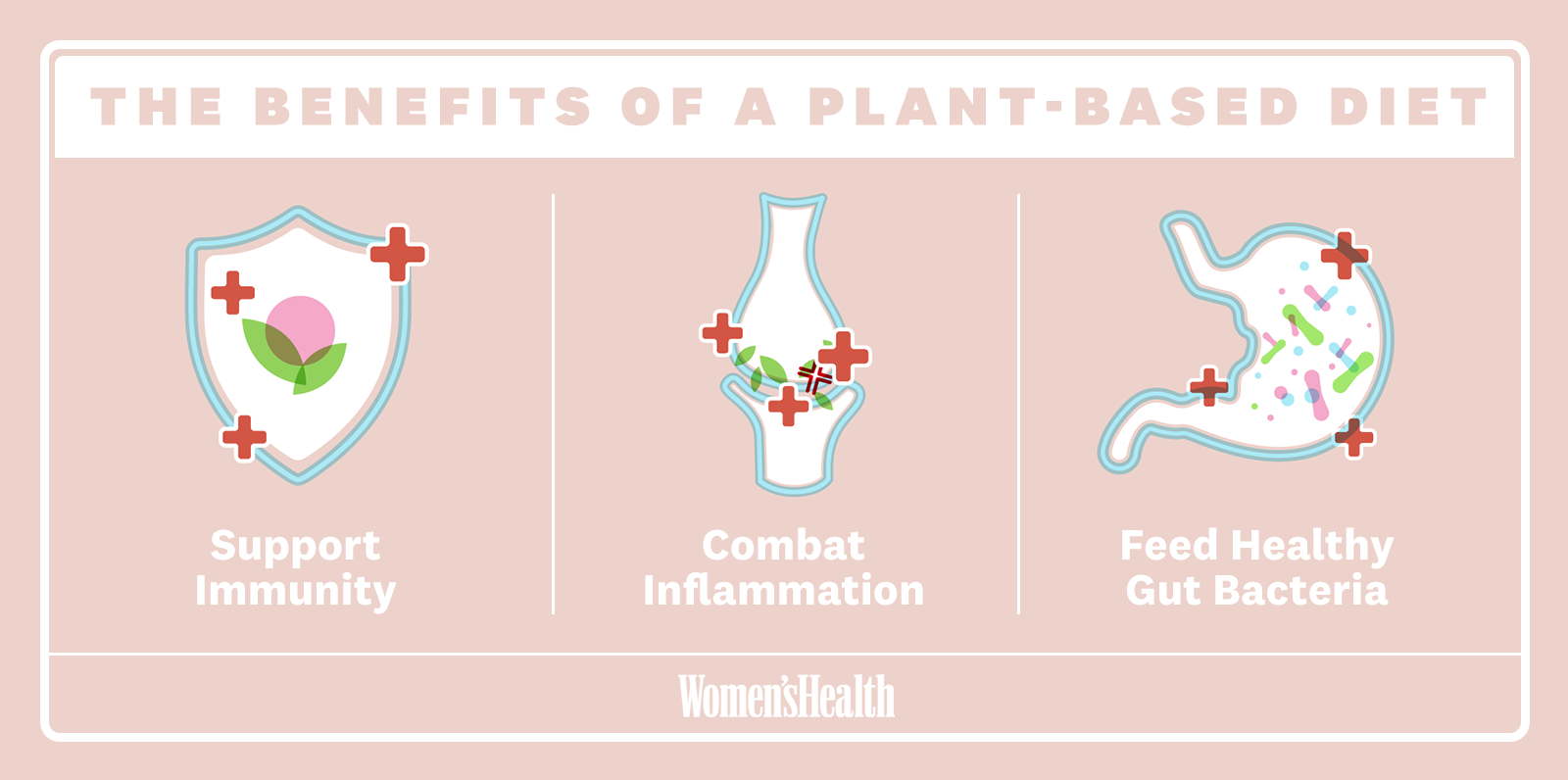
Swapping animal protein for plant protein has benefits, too. “Regularly consuming foods high in plant protein versus animal protein can help prevent and reverse a slew of chronic conditions, including diabetes and heart disease,” says Joseph. (The nutrients found in plants help support healthy cholesterol, blood pressure, and blood sugar levels.)
Another major reason people choose to eat plant-based? Cutting back on animal products has significant environmental benefits.
“Eating more plant foods reduces your carbon footprint since livestock production is responsible for a good portion of global greenhouse gas emissions,” says Joseph. In fact, one serving of meat contributes to more greenhouse gas emissions than twenty servings of vegetables, she says.
Others, still, go plant-based to support weight loss, which can totally work if you keep calories in check. Plant foods are high in filling fiber and low in calorie-dense saturated fats, Levitsky says—but you’ll still need to consume fewer calories than you burn.
Yes, it’s possible to get enough nutrients from plants.
One common criticism of plant-based eating: that it’s tough to get adequate nutrients—especially protein, iron and omega-3s.
Well, it’s totally doable. Though you may need to think outside the box sometimes, eating a wide mix of plant-based foods helps ensure you get the nutrients you need. “Deficiencies rarely occur when you eat a variety of plants,” says Levitsky.
On protein.
When it comes to protein, don’t stress too much. “It’s important to note that protein isn’t just found in meat,” says Joseph.
Although plants contain incomplete proteins (while animal products contain complete proteins), eating different sources of plant proteins daily helps you get in all the amino acids you need to support healthy body functions, says Gorin.
You can also sneak more into your diet by adding nutritional yeast to pasta instead of grated cheese, blending white beans or chickpeas into smoothies, and snacking on nuts and nut butters.
Just focus on whole foods, as opposed to relying on processed meat substitutes.
On iron.
Another nutrient of concern for plant-based eaters? Iron.
“Your body absorbs heme iron, the type found in animal products, more easily than it does plant-based (a.k.a. non-heme) iron, like that found in spinach,”says Gorin.
You can make plants’ iron more bioavailable, though, by pairing it with vitamin C-containing foods, Gorin says. Example: If you’re eating a spinach salad, squeeze some lemon juice on top.
On omega-3s.
Since most people get their omega-3s from fatty fish, they can be hard to come by on a plant-based diet. That’s why Gorin recommends taking a supplement made from algae, which is a good source of these healthy fats. In fact, Gorin takes algae omega-3 supplements herself.
The potential downsides of plant-based diets.
Plant-based eating is a safe and healthy choice for most people, but you should always talk with your doctor or a registered dietitian before making big changes to your diet.
“Anyone with a history of eating disorder or disordered eating shouldn’t follow a diet that eliminates food groups,” says Joseph. “A plant-based diet in the wrong hands can be abused as another restriction diet.”
If you that hits close to home, Joseph recommends experimenting with plant-based recipes, but steering clear of any strict food rules and restrictions, or labeling your eating habits.
How to transition to a plant-based diet.
If you’re ready to start eating more plants, Joseph recommends starting small.
“Overturning your entire diet in a day is overwhelming and lessens the likelihood of you sticking with it,” she says. “Instead of jumping to extremes, pick two small changes to implement each week.” One easy first step: Swapping cow’s milk for an unsweetened dairy-free milk.
“Think about how you can enhance your diet instead of focusing so much on taking things away.”
And remember: A plant-based diet doesn’t mean you can never eat animal products again.
“Think about how you can enhance your diet instead of focusing so much on taking things away,” says Joseph. “Research suggests that following a flexitarian diet (which increases plant-based foods and reduces, but doesn’t eliminate, animal foods) yields similar health benefits, like reduced risk of heart disease and diabetes.”
When in doubt, just start with Meatless Mondays. Cutting out animal products for just one day a week is relatively easy—and can still have a profound impact on the environment and your overall health, Joseph says.
Don’t know where to start? Here’s a sample day of plant-based eating.
Breakfast
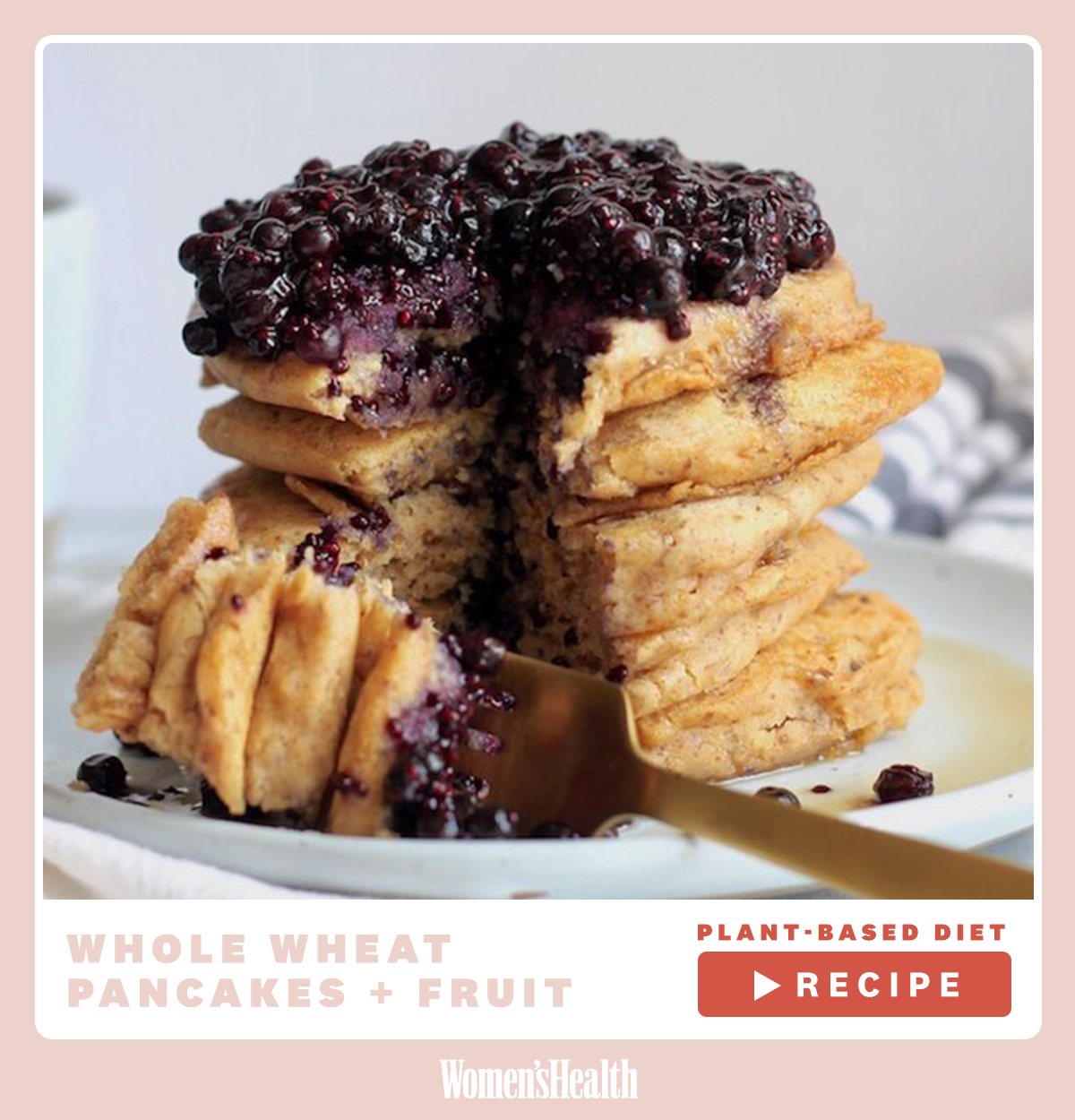
Joseph loves adding chopped apple to vegan pancakes made with whole-wheat flour for a satisfying and well-rounded breakfast.
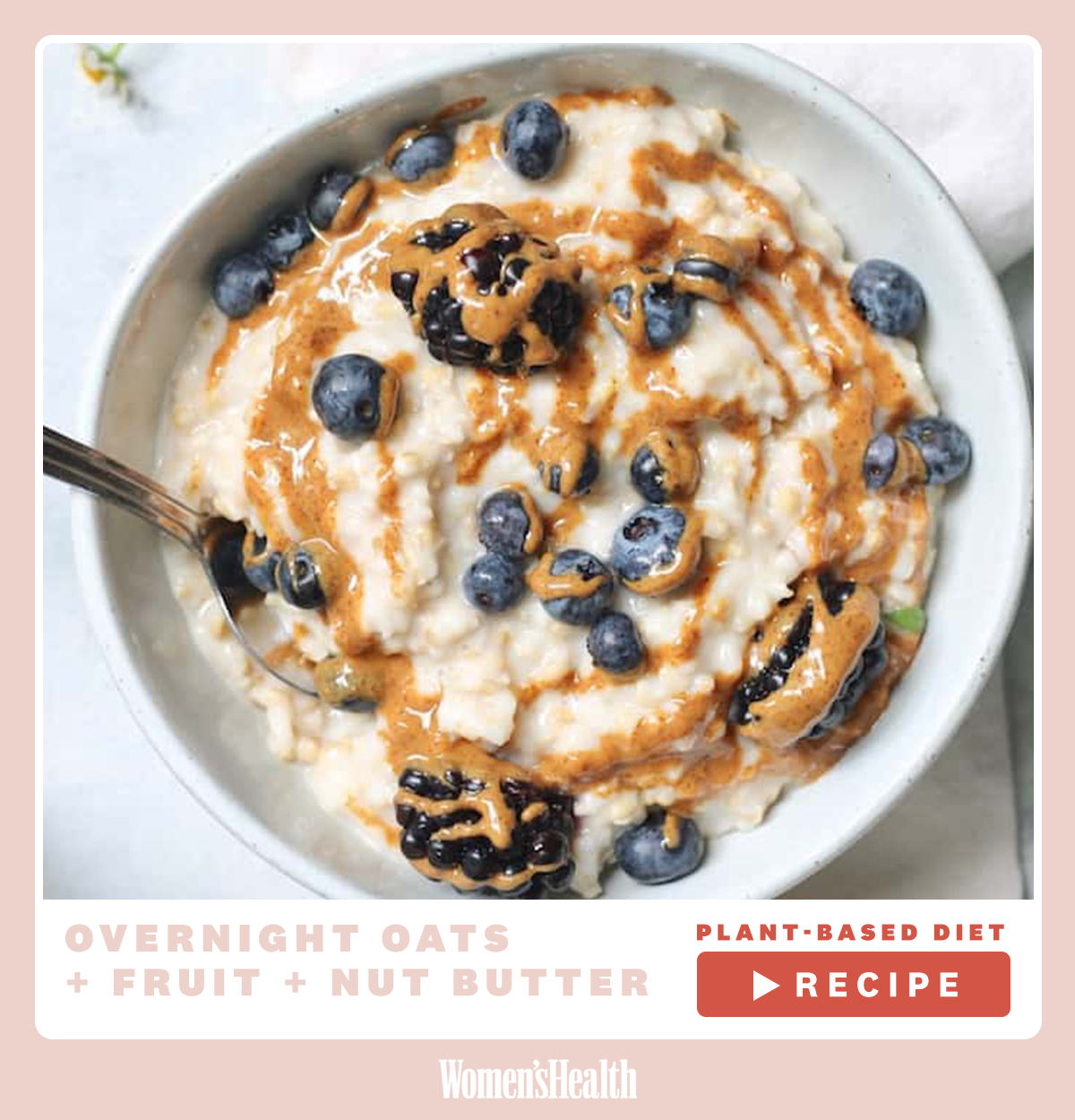
If you don’t have time for pancakes in the morning, Joseph recommends whipping up a batch of steel-cut overnight oats, which you boil for a few minutes on the stove and then store in the refrigerator overnight. (Standard oatmeal is a great choice, too!) In the morning, she stirs in some fruit and nut butter.
Lunch
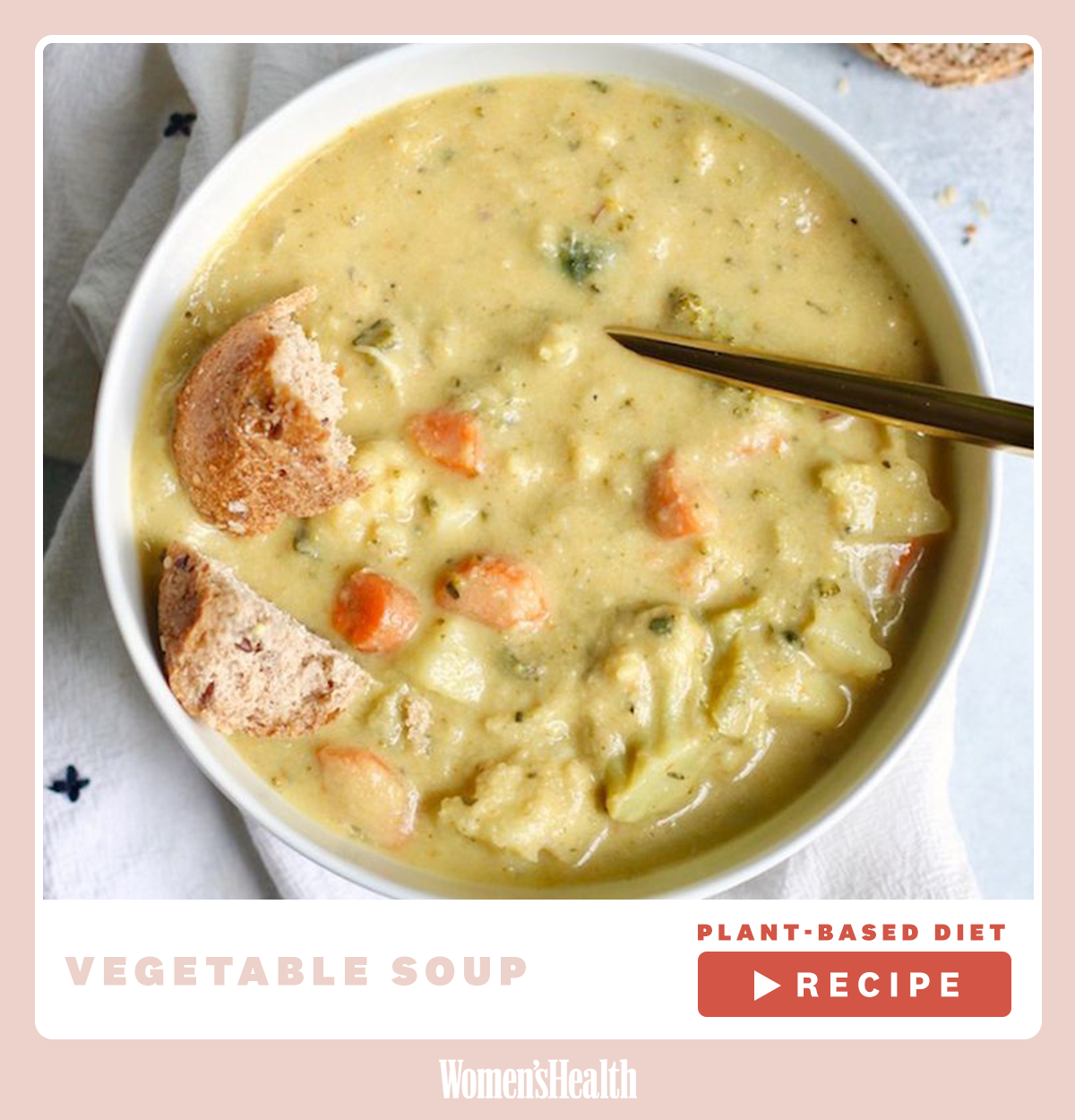
Want a re-heatable winter lunch option sans meat? It’s totally possible to make a hearty, meatless, dairy-free soup with potatoes, broccoli, cauliflower, non-dairy milk, and other tasty plant-based foods.
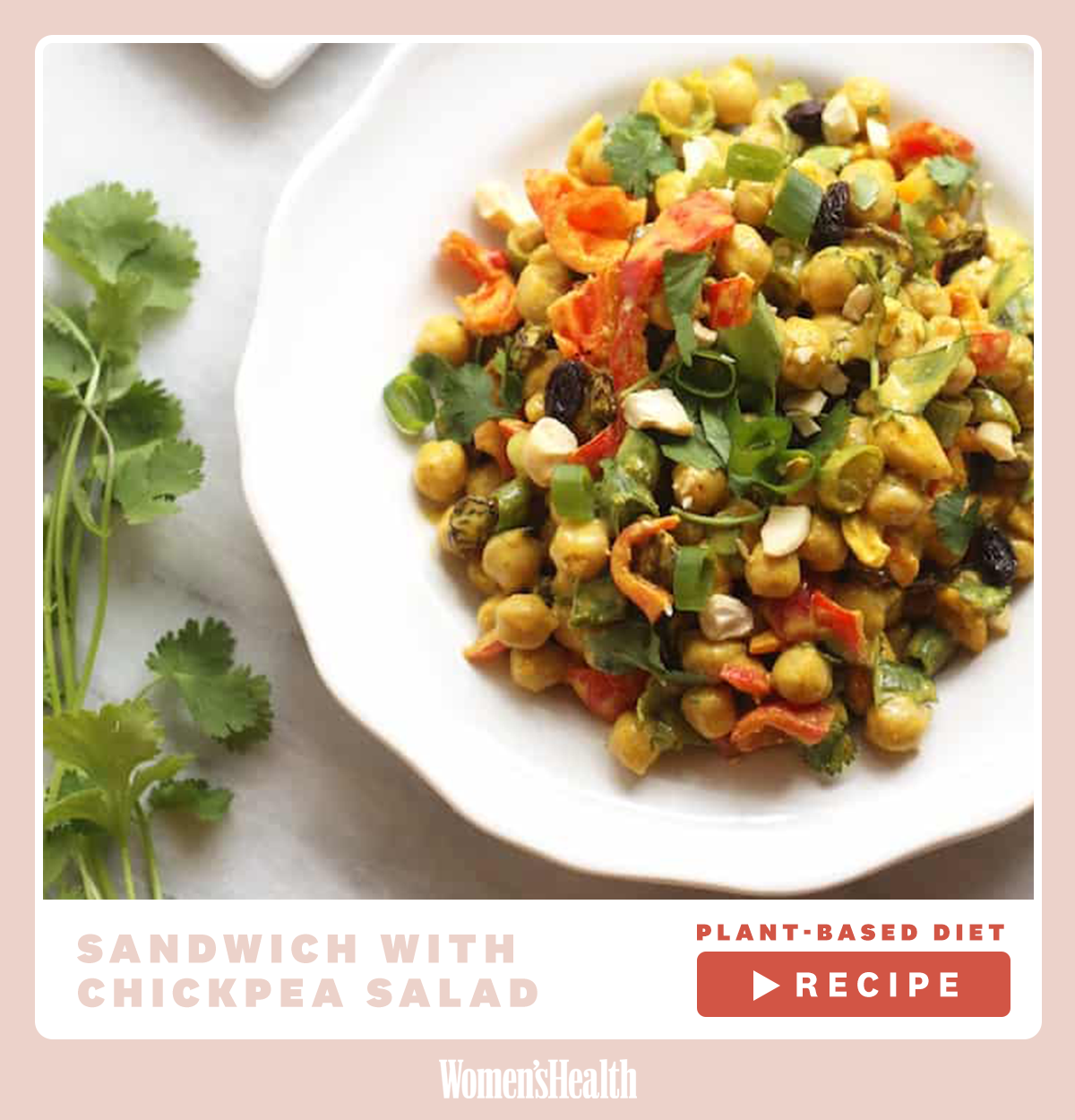
If soup isn’t your jam, try topping a filling a sandwich with greens and chickpea salad (instead of chicken or egg salad).
Snack
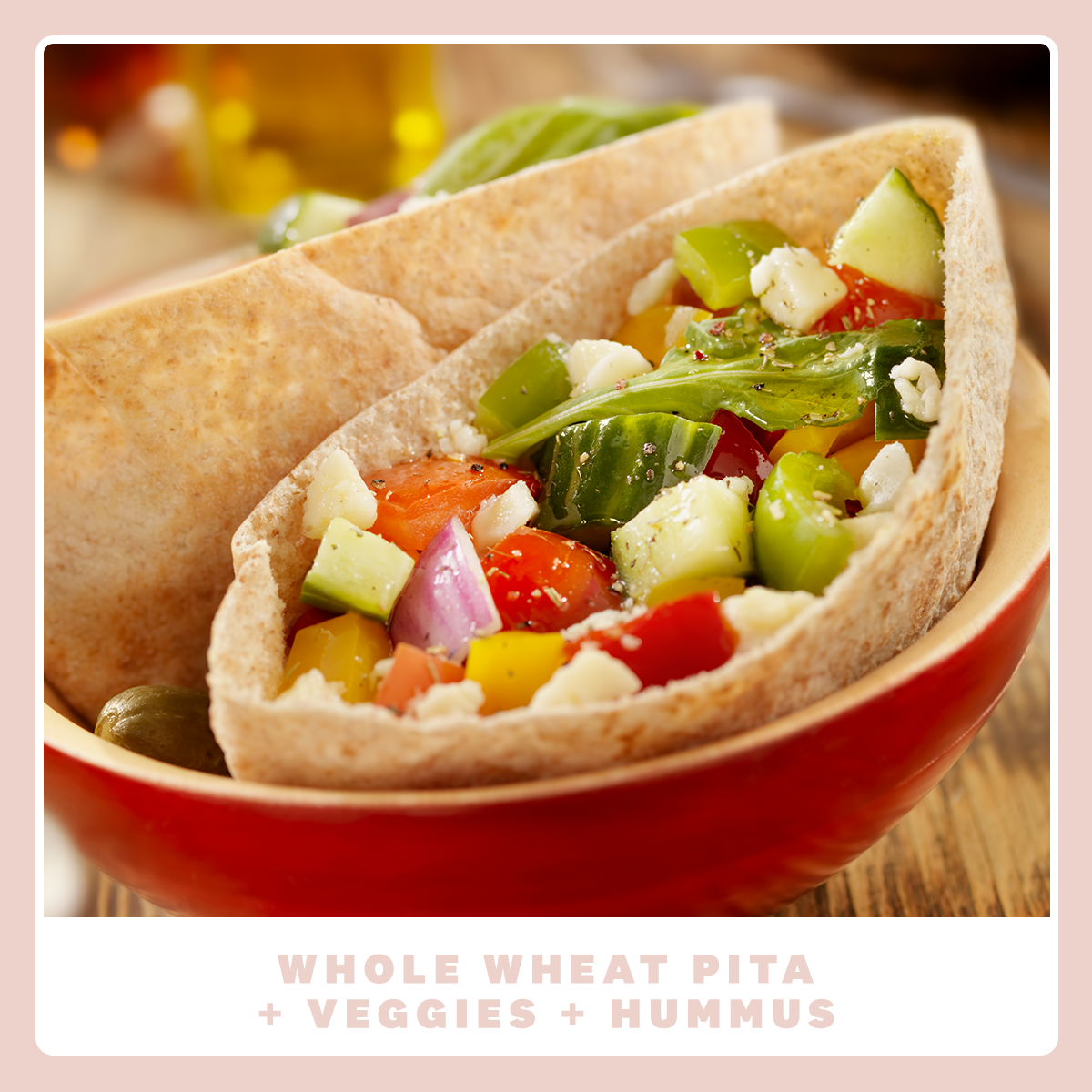
Since they contain filling fiber and protein, pulses and whole grains are musts on a plant-based diet. For an afternoon pick-me-up, pair a quarter cup of hummus with a small toasted pita and a cup of raw veggies for dipping.
Dinner
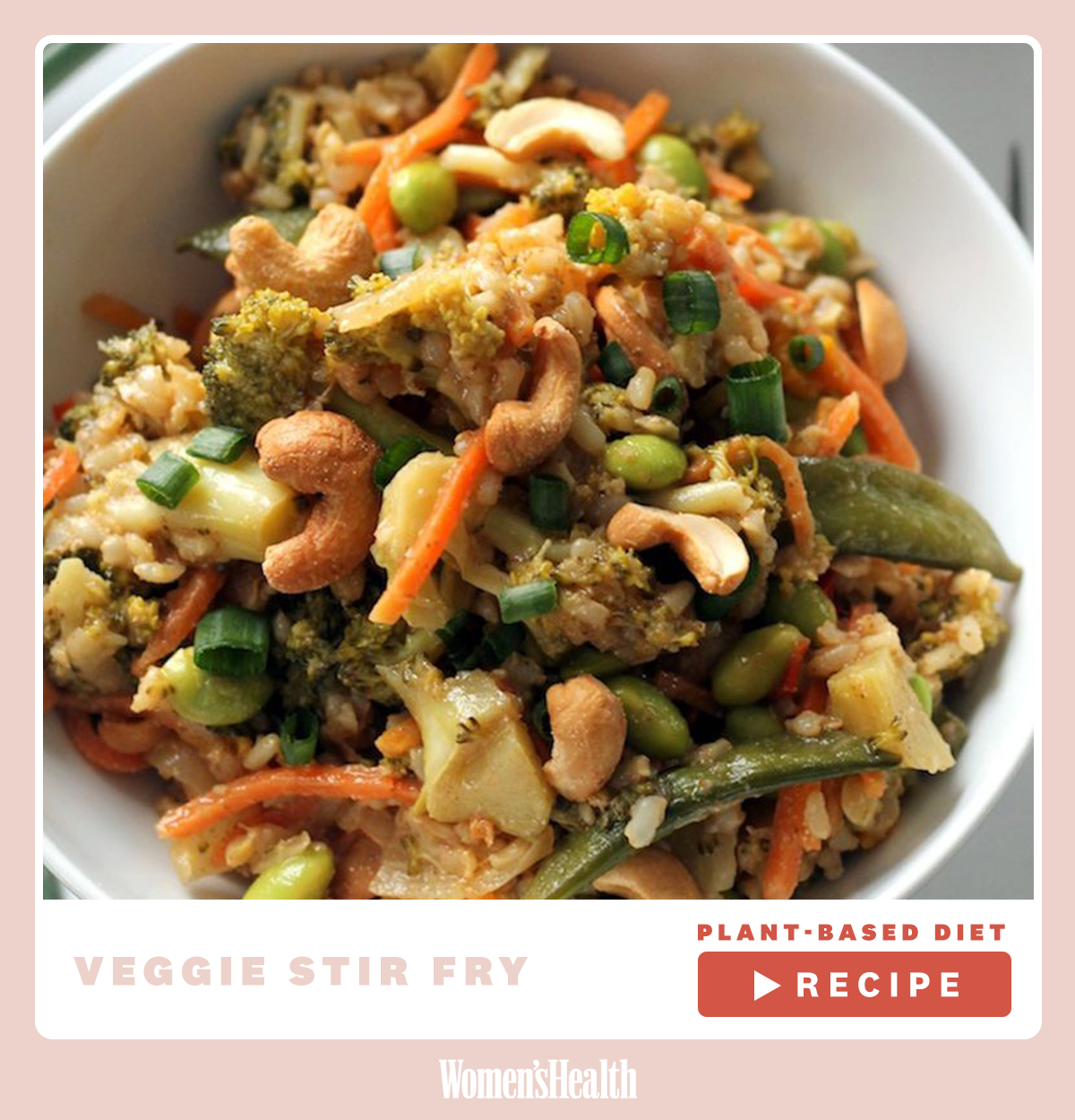
You don’t need beef or shrimp for a tasty stir-fry. Serve this easy vegetable dish over brown rice and you’ll have a satisfying dinner in under 30 minutes.
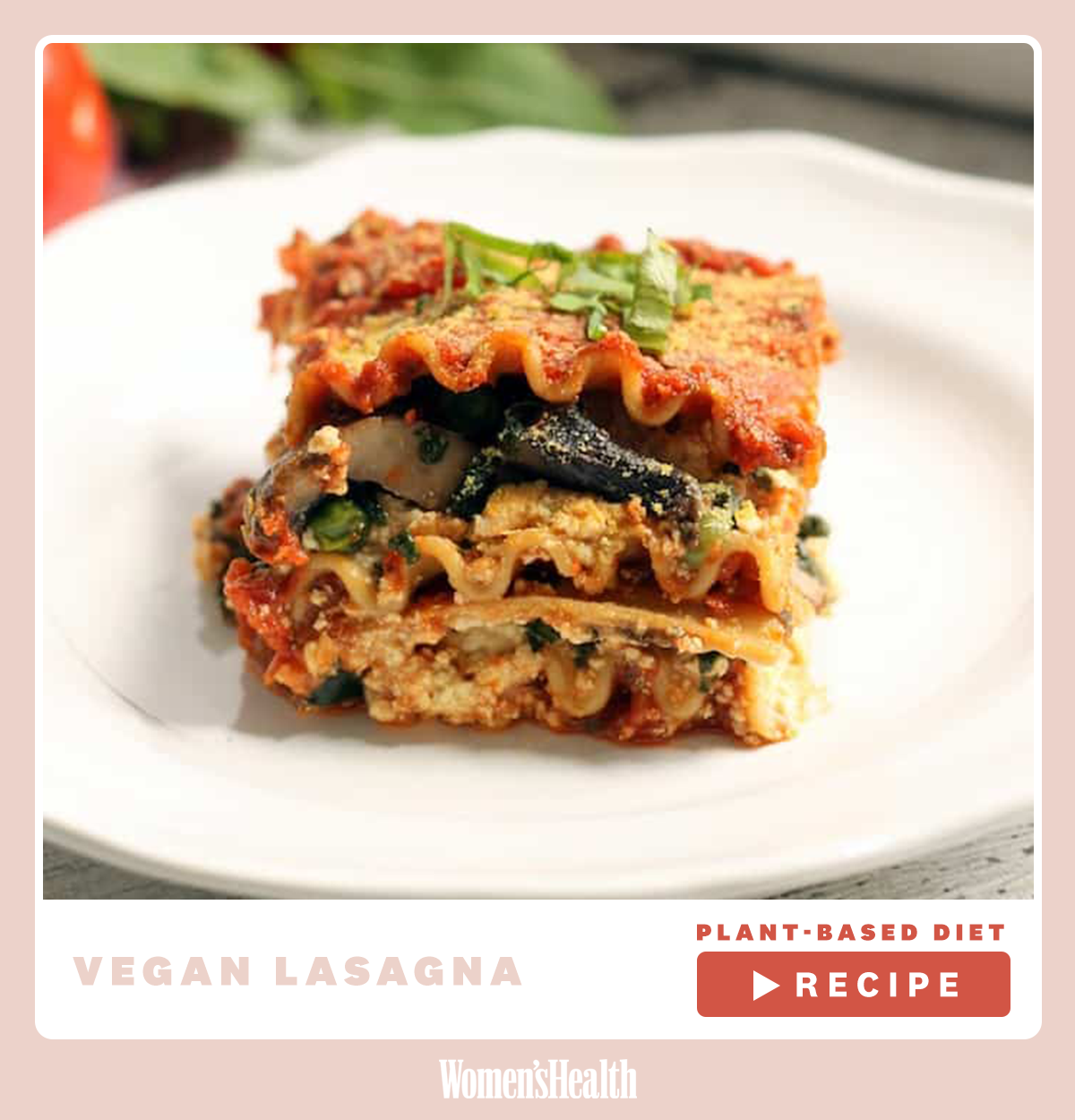
If you need something a little more comforting, there’s always lasagna. The plant-based version of this carb-filled casserole gets its lasagna-ness from tofu ricotta, made with herbs, hummus, and nutritional yeast.
Dessert
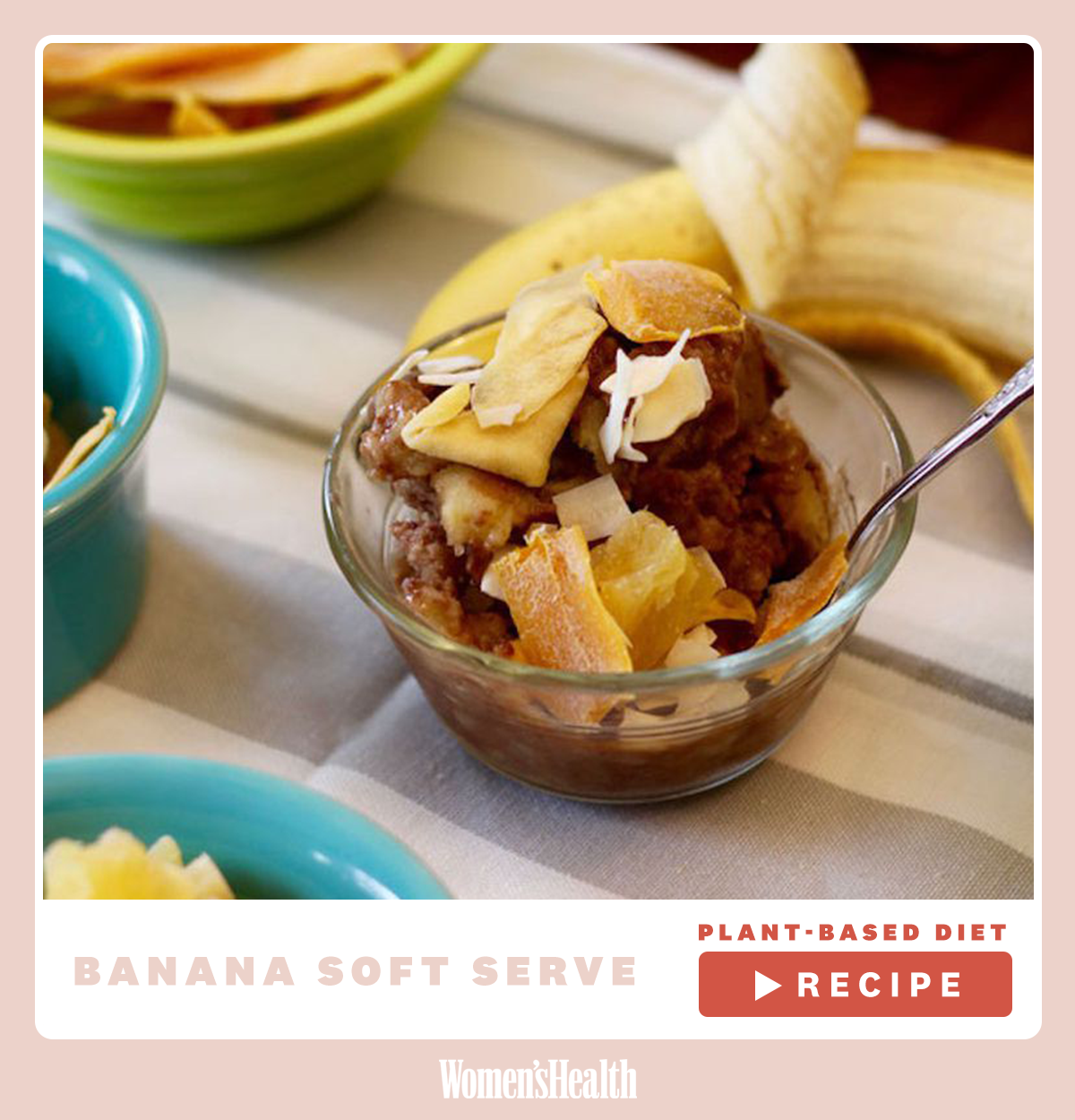
There are plenty of dairy-free ice cream options out there, but if you’re looking for a whole foods-based treat, banana soft serve is your best friend. Gorin loves blending frozen bananas with cocoa powder, and adding healthy toppings like nuts and shredded coconut.
Ready to shop? This plant-based diet grocery list covers all of your bases.
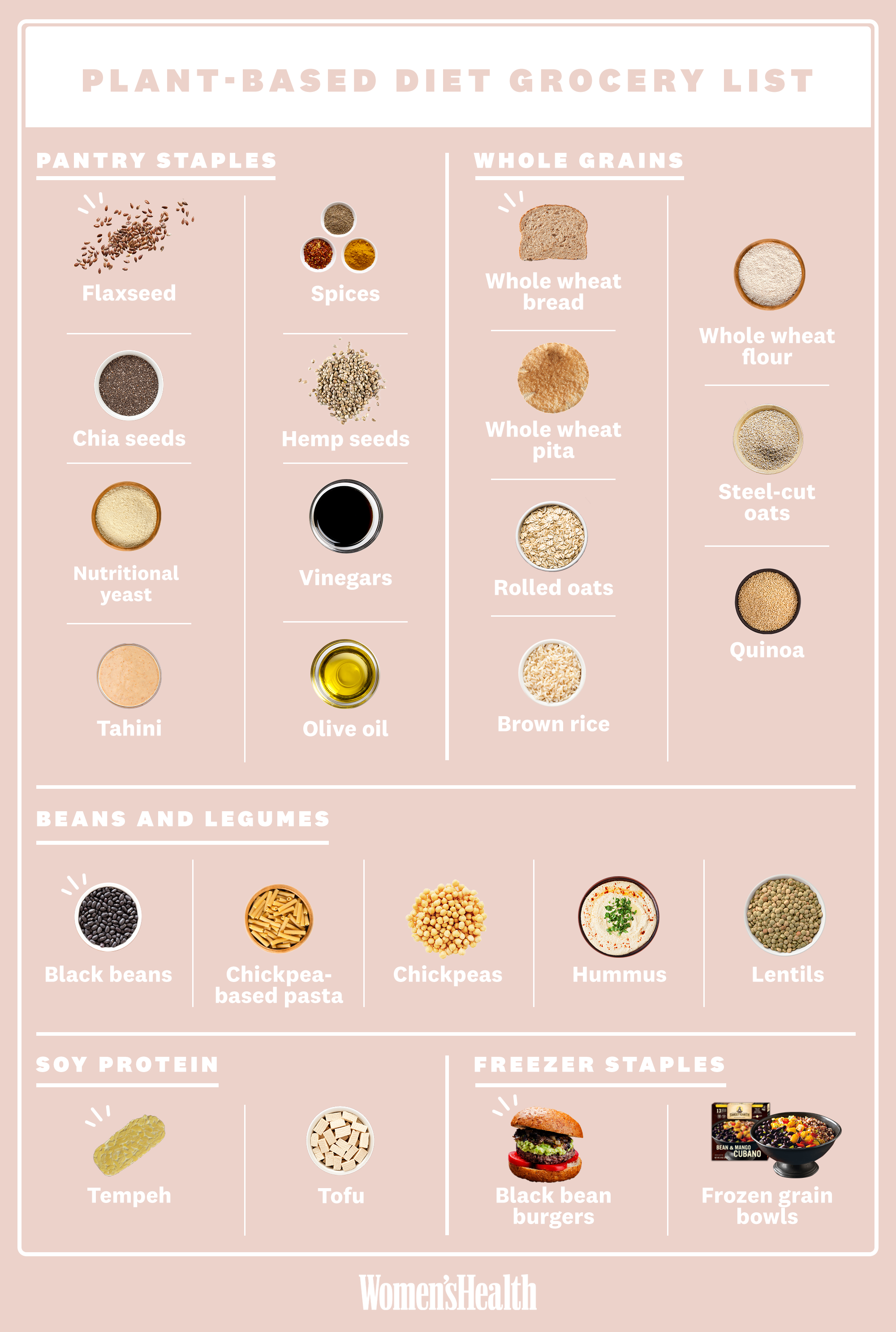
The bottom line: Think of plant-based eating as a template that encourages more whole plant foods, instead of as a restrictive diet that makes all animal foods off limits.
Source: Read Full Article
